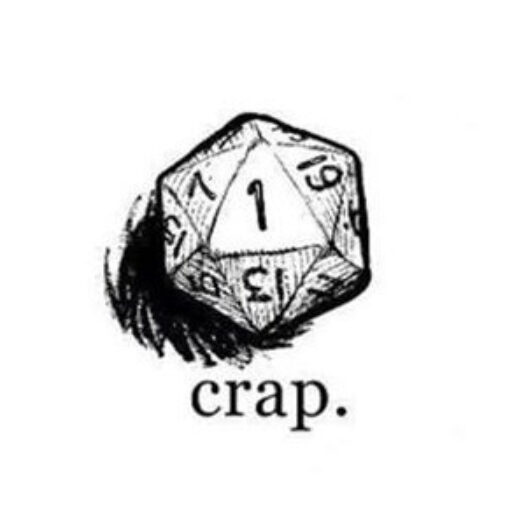People have a lot of misconceptions about religion in D&D style games, probably because we tend to be rather annoyed by the way very religious people behave in the real world. It is an important… crucial part of the background of almost any world, but one that I think gets ignored too often.
The gods of the Warhammer setting are crucial since it is the plots of the Chaos gods that usually make up the impetus for action. The Chaos gods are very, very active in that game. In comparison, the hand of Humanity’s God, Sigmar is only ever felt when you get a 0 on a d10, which starts off a cascade of damage. You can feel Sigmar in every critical, which in WFRP, is a lot. But he really doesn’t ask anything of you, which is decent.
Religion also helps explain the fundamental misunderstanding that people have about Paladins; so I thought I’d jot down a few thoughts after reading over some of the religion background for Pathfinder.
The gods are present in Pathfinder. There isn’t really any debate; it is super obvious when they show up and do stuff and they do stuff quite a bit. That makes faith in Golarion quite a bit different from faith on Earth. To have Faith necessarily means you have to believe in something unrevealed. There was all sorts of early skullduggery in the Christian Church between what is now mainstream and the gnostics, who wanted to know God. No, said the church, you have to have faith in him without experiencing him; if you experienced him, you wouldn’t be able to have faith and faith is what he asked for… Stab, stab, burn alive.
In a world in which the gods are frequently evident and revealed, the idea of evangelizing or of weird splinter cults doesn’t really make sense. Clerics become not interpreters of someone else’s interpretation of God’s will but ACTUAL go-betweens for their god. When Lonny smites someone, Torag himself pays attention to Lonny and gives him a helping hand. Lonny’s faith is not that Torag exists, but that Torag will continue to help him through whatever shitstorm he is currently fending off. The religious question on Golarion can’t be, do you believe in a god, but how much reverence do you give each one? That’s what justifies Clerics having high WIS and with CHA as a lesser priority; they don’t need to preach or sway people.
Trying to stay out of the sight of the gods seems perfectly reasonable, I’m not saying that everyone has to be religious – you can reject the commandments they hand down; there is a nation in Pathfinder called Rahadoum which has done just that, forswearing all contact with the divine. But I think it deserves more thought than it sometimes gets.
In Pathfinder the gods that routinely have Paladins are Iomedae (Bravery), Torag (Protection), Sarenrae (Redemption), Irori (Self-perfection), Abadar (Civilization – probably the only faith that would argue that local laws were best respected, in most instances) and Shelyn (Love). Paladins hold themselves to a far more rigorous standard than do most others: even clerics and monks (monks tend to focus on their own perfection, not on the world around them). Since the codes of conduct for paladins is never specified, it is kind of up to the Paladin player to decide the manner of their restrictions.
Here is what it says under the Paladin Code of Conduct section:
A paladin must be of lawful good alignment and loses all class features except proficiencies if she ever willingly commits an evil act.
Additionally, a paladin’s code requires that she respect legitimate authority, act with honor (not lying, not cheating, not using poison, and so forth), help those in need (provided they do not use the help for evil or chaotic ends), and punish those who harm or threaten innocents.
Associates: While she may adventure with good or neutral allies, a paladin avoids working with evil characters or with anyone who consistently offends her moral code. Under exceptional circumstances, a paladin can ally with evil associates, but only to defeat what she believes to be a greater evil. A paladin should seek an atonement spell periodically during such an unusual alliance, and should end the alliance immediately should she feel it is doing more harm than good. A paladin may accept only henchmen, followers, or cohorts who are lawful good.
That’s really not that hard.
Paladin misconception #1 – Paladins don’t break the law.
The problem with running Paladins is that people tend to think they can’t break the law. Which they totally can. The code of conduct that a Paladin swears to is to follow a strict set of rules handed down by their religion – not the criminal code or statutes of the nation they are currently in. I think the word Lawful throws people: Did Stalin have laws? Yes. Would they appeal to a Lawful Good Paladin? No. What about Apartheid? Paladins go about Good in a Lawful way, they don’t go about Law in an Obsessive way. For some reason, Monks, who also have to be Lawful, never get saddled with this misconception; which is good because again, the Law that a monk adheres to is his own set of restrictive rules rules, not the local criminal code.
E.g. A paladin of Shelyn, goddess of flowers and love and art and beauty (yes, she has Paladins) has tracked down a priceless work of art that some nefarious do-badder is going to cannibalize for some ritual at their Magnimar town home. Is she going to let the local criminal code stop her from breaking the door down, retrieving the work of art and – if absolutely necessary – killing the do-badder in combat when he resists the intrusion? No. She may not favour that plan precisely, but local laws are of much less concern than the pledge to protect works of art.
Paladin misconception #2 – Paladins tell everybody what to do.
Unlike Clerics, Paladins are CHA monsters and that’s because the Paladin hopes to lead by example. The ‘lead by example’ part is important. Paladins would be good at persuading people to their point of view, and may well do that, but rather than tell someone they shouldn’t do X to solve a problem, they’re likely to get up and prove why they don’t need to do X by solving the problem in a different way. Maybe a harder way, sure, but they’ll show, rather than tell. And with that high CHA, they’ll likely look great doing it.




like paladins, bards are CHA monsters and that’s because the bard hopes to lead by example. The `lead by example` part is important. Bards would be good at persuading people to their point of view…
— throw them into the woodchipper
— throw the witch off the roof
— build a tavern
2 out of 3 aint bad
I thought it was Corwin’s idea to throw Rhoswen off the roof…
…still “lead by retelling stories in the most personally favourable light” also falls under the Bard’s purview, so really, either way is right.
Mike,
There is no reason you canât have three out of three! You just need to rethink your location. Corwynâs Cross (working name, weâre not incorporated yet) is a small but growing community located somewhere between Turtle Back Ferry and Ft. Rannick. Weâve seen recent gains in the agricultural and educations spheres and are working through some zoning issues before opening a proposed 2012 woad processing plant.
The trouble with turning woad into blue dye though is that you need urine, lots of it and thatâs where you come inn (pun intended). We need a place where professional pissers can congregate to drink copious amounts of booze in between bouts of working at the procession plant, er barn. We also need to convince people to move to this out of the way place. Who and what better than an entertainment mecca run not by Mohammad but by the world famous Dagfinn Klang? Let me know what you think.
Rolland
I was singing through the arrow slits so they could hear me, and for a round I sang about throwing her off the roof.
Rolland: if Corwyn can get folks to build a tavern, Dagfinn Cleng is assured to put booze in it.